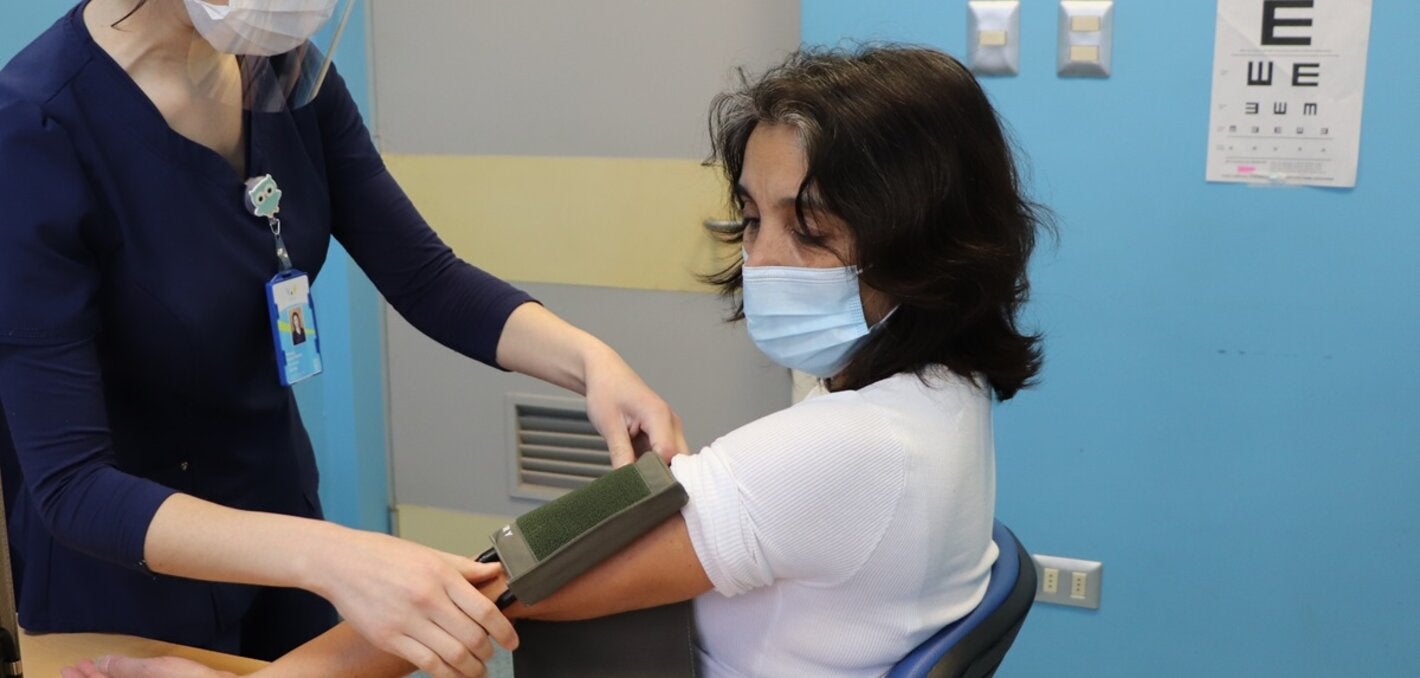
25 August 2021 - In Chile, more people die from cardiovascular disease than from any other cause. More than a quarter of all deaths every year ̶ around 30 000 in total ̶ are due to the disease.
Hypertension ̶ also known as high blood pressure ̶- is a serious medical condition and a key risk factor for cardiovascular disease. People living with hypertension have persistently raised pressure in their blood vessels, which results in their hearts having to work much harder.
Most people with hypertension are unaware of the condition because there are usually no warning signs or symptoms. That is why it is sometimes called a “silent killer”. While hypertension can be detected quickly and easily by a health-care professional, far too many people are unaware that they are suffering from this condition or are at risk.
Around one in four men and one in five women live with hypertension in Chile ̶- equivalent to more than four million people. Fortunately, rates of hypertension have been steadily declining during the past years.
Encouraging progress
This decline is the result of sustained action on noncommunicable diseases over a period of several decades in Chile. Hypertension was the focus of the country’s first chronic disease programme run in primary health centres across the country and, since the mid-1980s, the country has been working hard to improve the rates of detection and control.
Since the turn of this century, Chile has conducted three national health surveys that collect population data on hypertension. Data has been collected on awareness, prevalence, treatment coverage and types of medication, as well as levels of hypertension control. A recent analysis of these surveys found that hypertension rates have fallen steadily since the first survey. Following the creation of national targets, levels of controlled hypertension more than doubled.
More recently, hypertension has been included within Chile’s universal health coverage plan known as “AUGE”(Universal Access with Explicit Guarantees). This plan gives formal guarantees to people living with hypertension on access to quality care as well as protection from financial difficulties as a result of health-care costs.
In 2013, the Pan-American Health Organization (PAHO), with support from the United States Centers for Disease Control and Prevention, worked with the Ministry of Health of Chile to implement an innovative treatment project in two hypertension clinics. This project used an algorithm to treat hypertension which made medicines both more available and affordable; implemented clinical registries to monitor patients with hypertension; and promoted “task -sharing” ̶- the process through which local health workers provided services that would otherwise only be available in specialist clinics. This initiative led to improved hypertension management at the primary health care level.
According to Dr Pedro Ordunez, Advisor for Chronic Diseases at PAHO, this innovative work had three main benefits:
First, the clinics achieved higher rates of blood pressure control among people living with hypertension. Second, patient data are used to provide feedback to local health centres on how their hypertension services are performing. And third, the project has led to policy improvements in how hypertension medicines are provided, including a pilot of fixed-dose combination medicines that improved adherence to medication."
The Global Hearts Initiative
More recently, Chile was one of the first countries to adopt the WHO Global Hearts Initiative. Since its introduction, the HEARTS technical package has enabled standardized hypertension treatment to be provided to three million people, in 18 lower- and middle-income countries. Sixteen of these countries are in the Pan-American Region, with more than 700 health centres involved. Technical support from PAHO to ministries of health across the Region, through the HEARTS in the Americas Initiative, is helping countries like Chile to adopt global best practices to manage hypertension.
As a consequence of HEARTS, more than half of the health services in Chile use guidelines for managing cardiovascular disease. And a similar proportion of primary health care sites offer “risk stratification” ̶- a tool for identifying those most vulnerable to heart disease so that they can receive tailored interventions.. As well as reducing rates of hypertension, these activities have led to progress in hypertension control at the population level in Chile.
Still to come
Dr Anselm Hennis, Director of Noncommunicable Diseases at PAHO, reflects that the results achieved in Chile so far can serve as a blueprint for other countries in the Region:
“Chile’s declining hypertension prevalence is the result of sustained commitment for action on noncommunicable diseases. By combining evidence, investment and political priority, Chile is showing us that many of the measures to improve hypertension control not only already exist but are also effective. Chile continues to serve as a shining example of how countries can advance hypertension control, which will not only benefit people living with hypertension, but their families, communities and society as well”.
Yet, action on hypertension is not only critical to prevent more deaths from cardiovascular disease in Chile, but also to improve the quality of lives for the nation’s four million people who still live with hypertension. For this reason, the Ministry of Health of Chile has committed to adopt HEARTS in all primary health care centres by 2030.
Additional information
In September 2017, WHO began a partnership with Resolve to Save Lives, an initiative of Vital Strategies, to support national governments to implement the Global Hearts Initiative. Other partners contributing to the Global Hearts Initiative are: the CDC Foundation, the Global Health Advocacy Incubator, the Johns Hopkins Bloomberg School of Public Health, PAHO and the United States Centers for Disease Control and Prevention. Since implementation of the programme in 2017 in 18 low- and middle-income countries, 3 million people have been put on protocol-based hypertension treatment through person-centred models of care. These programmes demonstrate the feasibility and effectiveness of standardized hypertension control programmes.



